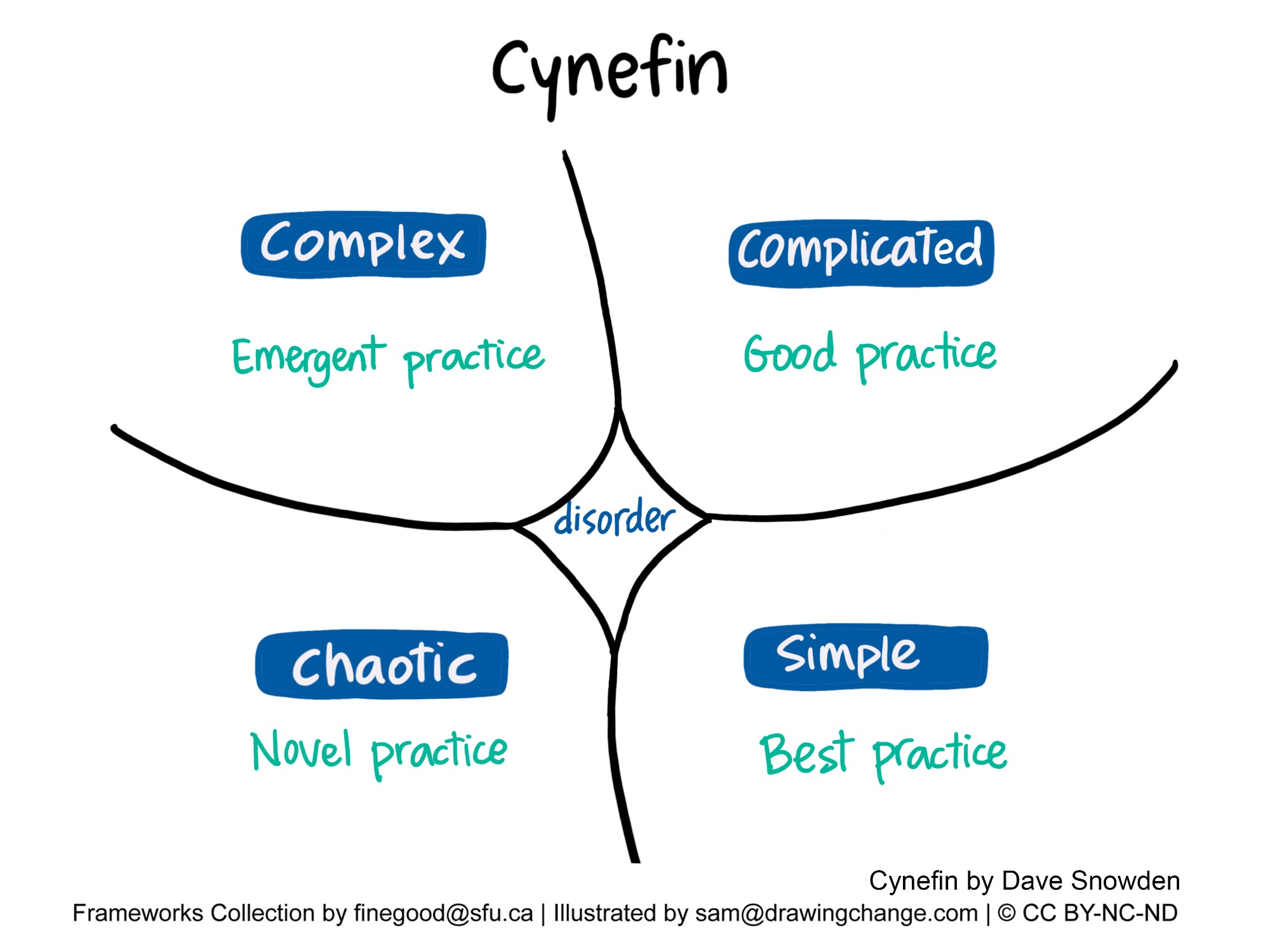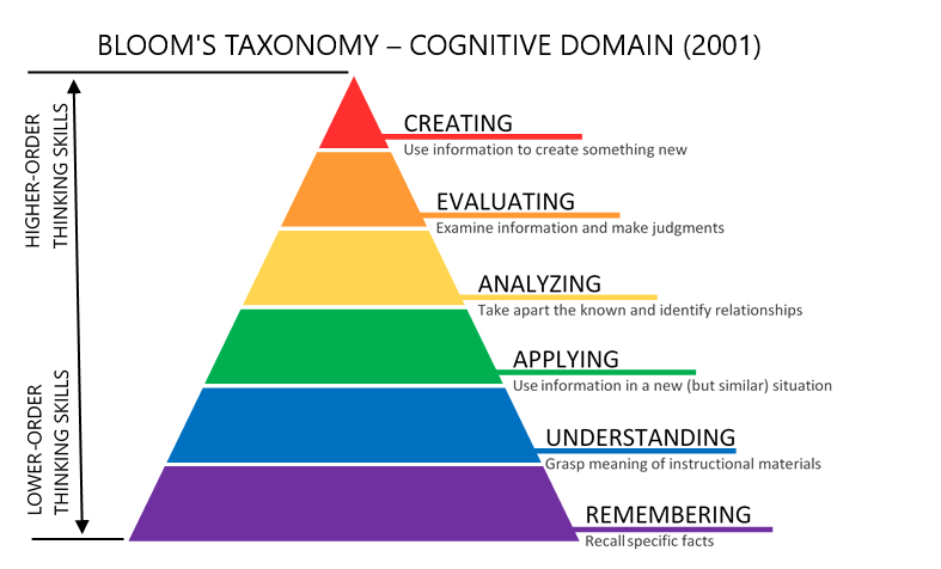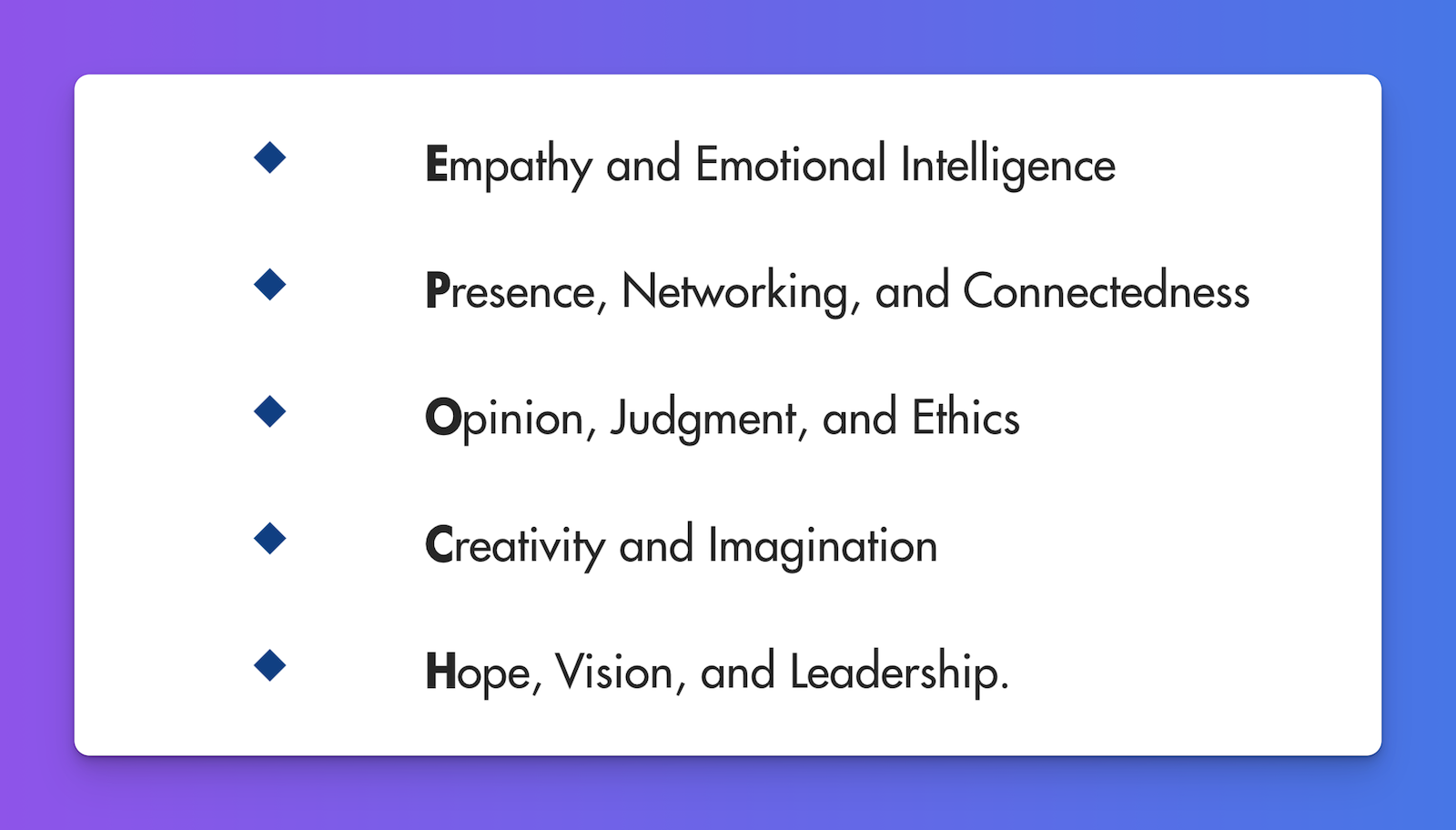The Big Shift: From Automation To Augmentation
The dominant narrative of “AI replacing human workers” has created anxiety, but it misses a more nuanced, or should I say, “actionable” reality.
In other words, the common response would be “…so how now?”
Sure, the earlier story of AI replacing human captures more headline. And as a marketer for over two decades, I know the sensationalizing techniques that writers deploy to catch attention and bait clicks.
Hype aside, AI is transforming how we work, and if we don’t pay attention to the shifts we need to make, we will be left behind.
You see, while generative and agentic AI have become increasingly capable, their performance is far from flawless. A 2024 study by Carnegie Mellon revealed that AI agents currently complete tasks with just 30.3% accuracy.
In other words, seven out of ten times, humans still need to step in. The implication? The real shift isn’t about replacing people with AI, but about redesigning work so that AI and humans complement one another.
This isn’t the first technological revolution to displace and redefine labor. In the 1990s, the PC revolution made typing, formatting, and spreadsheet skills indispensable. In the 2000s, the internet forced every professional to become an information navigator. Social media then disrupted marketing, branding, and customer engagement roles.
But while those revolutions unfolded over decades, the AI revolution is happening at a much faster pace. Skills that used to have five- to ten-year shelf lives may now last only one to two years. This puts urgent pressure on organizations to rethink their talent strategies: not just retaining workers, but redeploying them into roles where their human capabilities are enhanced, not erased, by AI.

The reinvention of talent
The New Workplay: Human Tasks That Will Grow
Even at the current state of low accuracy, AI is bound to automate more and more lower-order tasks like data entry, template writing, retrieval etc. That’s where we (humans) need to start moving up the value chain.
The most in-demand human tasks today center around areas where AI still struggles: ambiguity, emotion, ethics, and originality. These tasks leverage unique human strengths, demanding a blend of intuition, judgment, creativity, and emotional insight that machines have yet to master.
What are some new tasks that we need to shine a spotlight on? Here’s a quick list of seven.
#1 Oversight and Validation:
Oversight and validation roles are rapidly expanding as organizations deploy more AI tools that require constant supervision and quality checks. Humans in these roles detect subtle errors and contextual misunderstandings that AI alone might miss.
Take Amirul, a line trainer in a manufacturing company. His role has evolved from supervising routine training sessions to actively validating outputs generated by AI training modules. Amirul’s validation work becomes critical. He identifies subtle errors and contextual misunderstandings AI can’t detect, ensuring safety and quality.
#2 Strategic Thinking and Judgment:
AI can offer insights and data-driven suggestions, but the ultimate decisions in complex, high-stakes scenarios remain human territory. Human judgment integrates multiple factors beyond what data alone can provide, such as ethics, brand integrity, and long-term impacts.
Sarah, a strategy director, sees her role enhanced by AI. While AI provides market trend predictions, Sarah integrates ethical considerations, brand reputation, and nuanced customer insights into decision-making, balancing automation with human wisdom.
#3 Creative Direction:
While AI can rapidly generate ideas and content drafts, the final touch of human creativity makes the difference. Humans excel at crafting emotionally compelling and innovative messages that genuinely connect with audiences.
Meet senior marketer, June, who leverages AI-generated content ideas but infuses them with originality and storytelling that resonates emotionally with customers. AI provides the canvas; Farah paints the masterpiece.
#4 Emotional Intelligence:
Human emotional intelligence becomes indispensable as organizations undergo rapid AI-driven change. Leadership now requires heightened empathy, communication skills, and psychological safety practices.
Take David, for example. He is a team leader in a tech firm, and he finds his emotional intelligence skills more valuable than ever. He guides his team through rapid AI-driven changes, builds psychological safety, and maintains trust amid disruption.
#5 Training and Facilitation:
As AI tools become commonplace, training shifts toward helping employees master the interaction and integration of these tools. Trainers now focus on strategic use, critical thinking, and collaborative problem-solving.
In the case of Emily, an L&D facilitator, who now teaches teams how to strategically interact with AI tools. She focuses on critical thinking, prompt engineering, and collaborative problem-solving, helping employees harness AI effectively.
#6 Ethical and Governance Roles:
The increased use of AI raises significant ethical and governance concerns, requiring humans to define guidelines, monitor compliance, and uphold accountability.
In the age of AI, Jia Ming, a compliance manager, finds his expertise increasingly crucial. With regulations like the EU AI Act, he defines ethical guardrails, assesses bias risks, and ensures transparency, protecting brand reputation and compliance.
#7 Meta-Cognition:
The rapid evolution of AI tools demands employees who can quickly adapt, learn new technologies, and guide others through change. Meta-cognitive skills, i.e. thinking about how we learn, become a key differentiator.
Here’s Priya, a product manager, who thrives due to her meta-cognitive skills. As AI tools evolve over time (monthly instead of the old annually), her ability to rapidly learn and adapt ensures her team remains innovative and responsive.
There are of course more new skills and tasks that will emerge over time, as we sometimes forget how fast the AI landscape is changing. Here’s where our ability to adapt shines.

A framework leads to Clarity. Clarity leads to Commitment.
3 Human Advantage Frameworks to Facilitate This Shift
Framework removes the guesswork and hardwork.
To fully leverage human strengths in an AI-driven workplace, we need frameworks that clearly differentiate between tasks suited for AI and those uniquely suited for humans. These frameworks help organizations strategically allocate tasks, training, and resources, optimizing the blend of human and AI capabilities.
Here are three established frameworks to guide this strategic thinking, each providing distinct insights into where human intelligence continues to outshine artificial intelligence.

The Cynefin Framework by Dave Snowden
#1. The Cynefin Framework:
The Cynefin framework, developed by Dave Snowden, categorizes tasks into four domains: Simple, Complicated, Complex, and Chaotic. In simple and complicated contexts, tasks have predictable outcomes and established best practices, making them ideal for AI. However, complex and chaotic situations lack clear patterns or predictable results, requiring human judgment, intuition, and adaptability.
For example, responding to standard customer support tickets (Simple domain) can easily be automated by AI chatbots. Conversely, managing customer sentiment during a sudden brand crisis (Complex domain) demands human intuition, empathy, and dynamic problem-solving skills that AI lacks.

Bloom’s Taxanomy by Benjamin Bloom (1956), and later revised by David Krathwohl
#2. Bloom’s Taxonomy:
Bloom’s Taxonomy provides a structured classification of cognitive skills, arranged from simpler to more complex tasks. At lower levels, such as remembering and understanding, AI demonstrates remarkable proficiency. However, the higher levels – analyzing, evaluating, and creating – remain predominantly human-driven, involving nuanced judgment and creative thought.
For instance, AI can recall customer data and perform basic trend analysis (remembering, understanding). Yet, when it comes to critically assessing new market strategies or innovating breakthrough products (evaluating, creating), human insight and creativity become irreplaceable.

MIT’s EPOCH Framework
#3. MIT’s EPOCH Framework:
The EPOCH framework from MIT identifies critical human capabilities essential in the 21st-century workplace: Empathy, Presence, Opinion (Judgment), Creativity, and Hope (Visionary Leadership). These attributes are fundamentally human and central to roles that demand emotional depth and genuine interpersonal connections.
In healthcare, empathy is irreplaceable. Nurses provide compassionate patient care and emotional support that AI cannot authentically replicate. Presence is crucial in sales or leadership roles, allowing humans to build authentic, trust-based relationships and motivate teams beyond what any algorithm can achieve.
Remember how we start this section by saying that frameworks remove guesswork and hardwork? By leveraging these frameworks, you remove ambiguity and gain clear, actionable insights into optimizing the human-AI dynamic.
Now that we’ve identified where humans excel, let’s explore tangible strategies you can implement immediately to effectively integrate human and AI strengths in your organization.

Playing the talent game differently
4 Skill-Shifting Strategies You Can Implement Today
To effectively navigate the rapidly evolving AI landscape, organizations must proactively implement targeted strategies. These strategies enable businesses to optimize the unique strengths of their human workforce while leveraging the efficiency and scalability of AI technologies.
While working with Radiant Institute can help you customize and personalize the AI shifts you need to make for your unique organization settings, below are four strategic actions you can begin applying immediately to future-proof your teams and processes.
#1. Redesign Roles Around Human Strengths:
Role redesign involves critically analyzing current job responsibilities to identify tasks that AI can efficiently handle and those that necessitate human strengths. Begin by auditing each role within your organization to discern clear separations between AI-suitable tasks and tasks demanding distinctly human attributes such as judgment, creativity, and nuanced interactions. By shifting responsibilities accordingly, employees can better utilize their innate skills, enhancing job satisfaction and productivity.
For instance, roles that involve data analysis can shift basic analytical tasks to AI, freeing analysts to spend more time interpreting data, deriving insights, and influencing strategic decision-making. This is also echoed from the 2025 Future of Jobs report by the World Economic Forum, where systems thinking, analytical thinking and creative thinking are among the top core skills of 2030.
#2. Invest in Fusion Skills Training:
The future of work demands an integrated skillset, where employees are proficient not only in using AI tools but also in thinking critically about how best to deploy them.
Fusion skills training, such as our Functional AI training programs, merge critical thinking with technical AI competencies. Employees learn to go beyond basic tool operation, acquiring the ability to apply AI strategically to enhance outcomes and inform decision-making processes.
An example is training marketing professionals to strategically use AI-driven analytics tools, allowing them to uncover deeper consumer insights and craft more impactful campaigns. This is also why in one of our 5 Mental Models of the AI Revolution, we talk about how “A human with AI will outperform a human, or AI, any day.“
#3. Evolve Leadership and Culture:
Leadership roles must adapt to reflect the continuous need for reskilling and innovative workflow designs. Transforming the Chief Learning Officer position into a Chief Work Officer role broadens the scope from traditional training programs to include designing AI-enhanced workflows and fostering a cross-functional collaboration environment.
Plus, organizations must cultivate a culture of experimentation, curiosity, and intelligent risk-taking to ensure that innovation thrives alongside technological advancement.
Consider a leader who creates a culture where teams regularly pilot new AI tools, openly discuss successes and failures, and continuously iterate processes. This is a future-proof team that fosters resilience and adaptability.
#4. Measure Human-AI Integration Success:
Implementing comprehensive metrics to evaluate the integration of human and AI tasks is essential for continuous improvement. Define clear key performance indicators (KPIs), such as human override rates (how often human intervention corrects or improves AI outputs), AI error detection efficiency, EQ and decision-making feedback from employee evaluations, and the percentage of roles redesigned for effective human-AI collaboration. These insights provide measurable data that organizations can use to refine their strategies continually.
An effective example would be regularly reviewing metrics related to AI-driven customer service interactions, analyzing human intervention frequency and the subsequent improvement in customer satisfaction scores. As Peter Drucker famously said, “You can’t manage what you don’t measure.”

Different times call for different mental models.
In Closing: Leading The Next Work Revolution
The question is no longer whether AI will reshape work. It already has.
The real question to ask is whether leaders will proactively redesign how humans show up in the new landscape. The winners won’t be the ones who automate the fastest. They’ll be the ones who rehumanize the fastest, bringing purpose, creativity, empathy, and wisdom to the table while letting machines handle the repeatable.
Yes, while Automation is on our AI Advantage Framework, we constantly encourage key leaders and team members in our programs to look at the other five – Augmentation, Anticipation, Acceleration, Activation and linking to what we just mentioned above, Actualization.
2025 is the year to lead with frameworks, build with metrics, and design with empathy. The future isn’t man or machine. It’s man with machine. And the opportunity is not just to survive the shift, but to thrive through it.

Maverick Foo
Lead Consultant, AI-Enabler, Sales & Marketing Strategist
From Decision-Maker to AI-Orchestrator: Why Decision Fatigue Is the Hidden Cost of the Modern Workplace
Jun 29, 2025
Is it rewarding to have employees taking such initiatives to become more productive… or is the risk of security something to worry about?
AI in Coaching: Where Human Wisdom Meets Digital Precision
Jun 21, 2025
Is it rewarding to have employees taking such initiatives to become more productive… or is the risk of security something to worry about?
Middle Managers in the Age of AI: Overloaded, Underrated, and on the Edge of Reinvention
Jun 14, 2025
Is it rewarding to have employees taking such initiatives to become more productive… or is the risk of security something to worry about?
REACH OUT TO US
Fill up your details below, and we will get back to you A.S.A.P.!




0 Comments